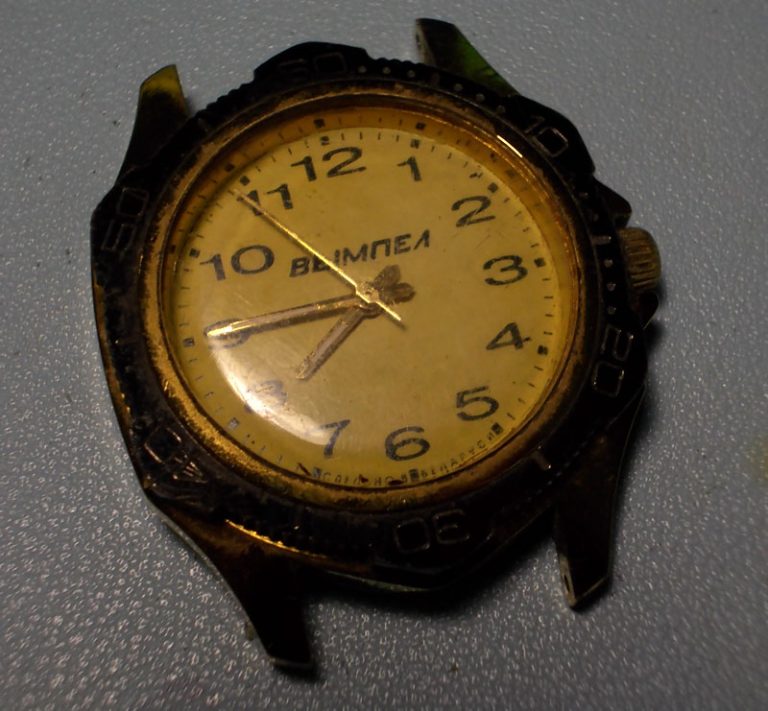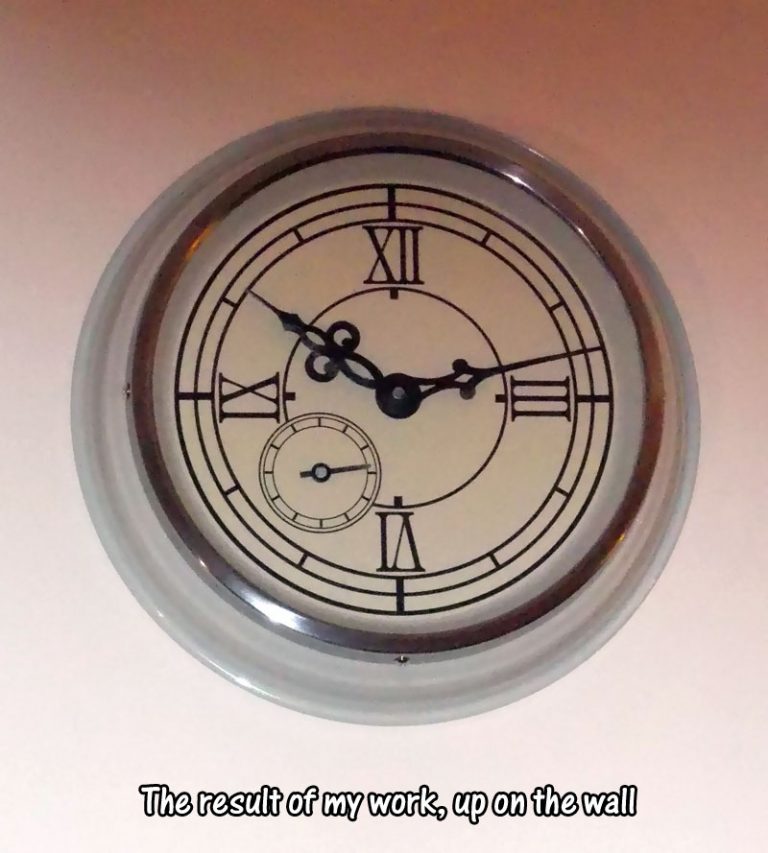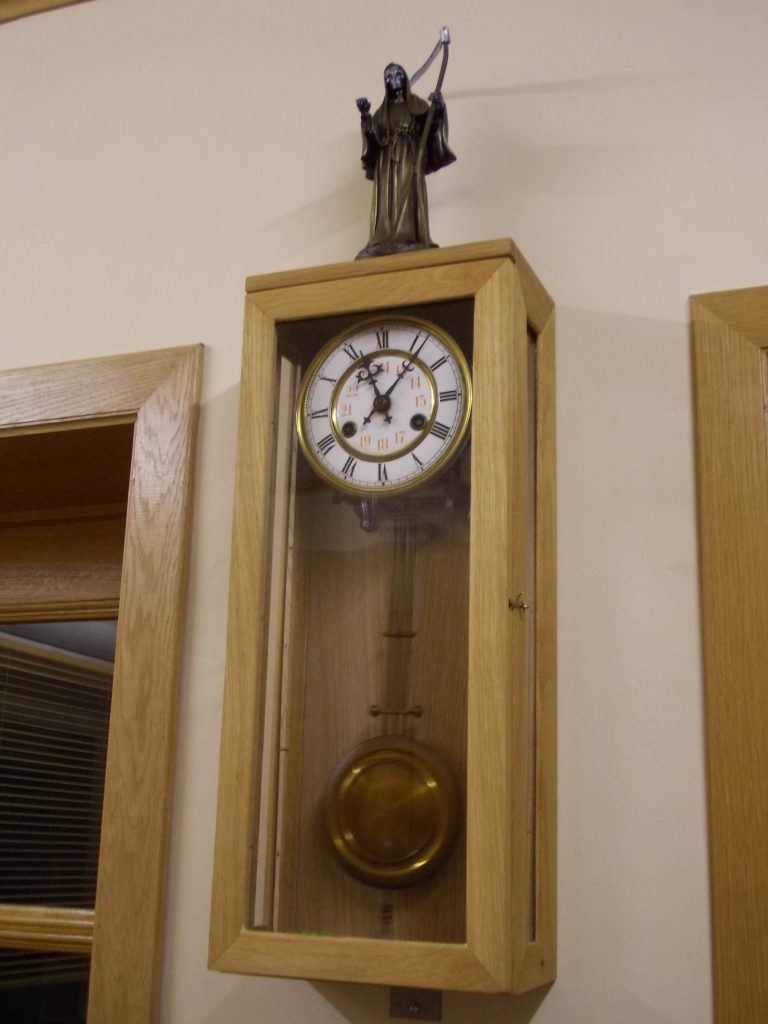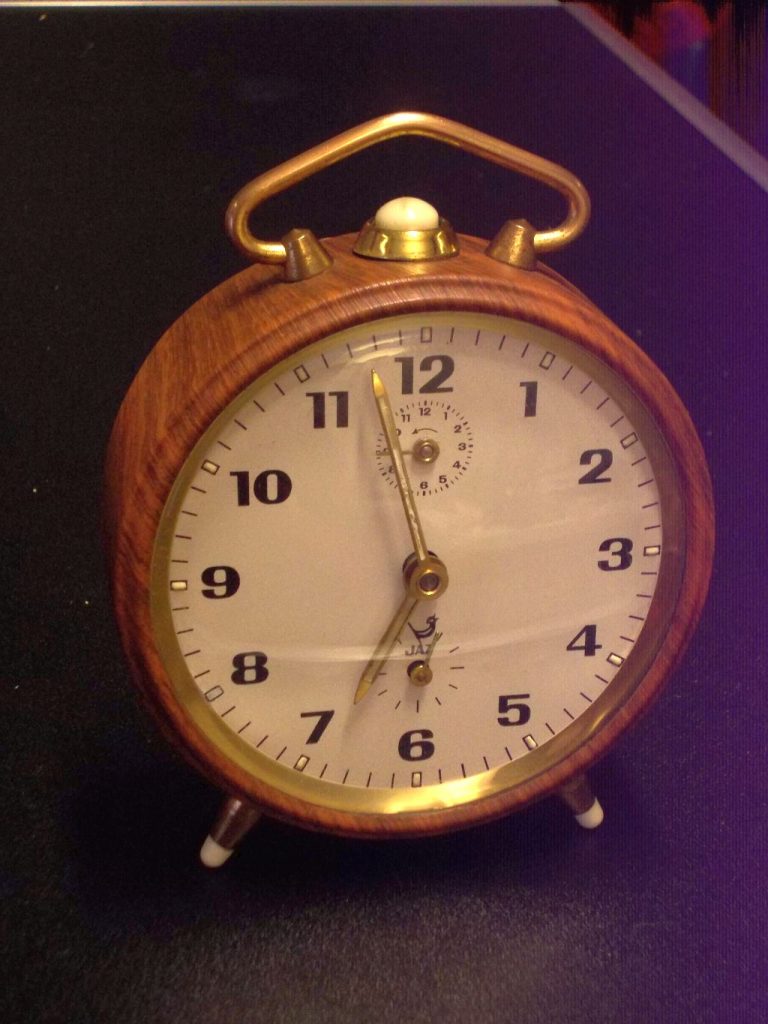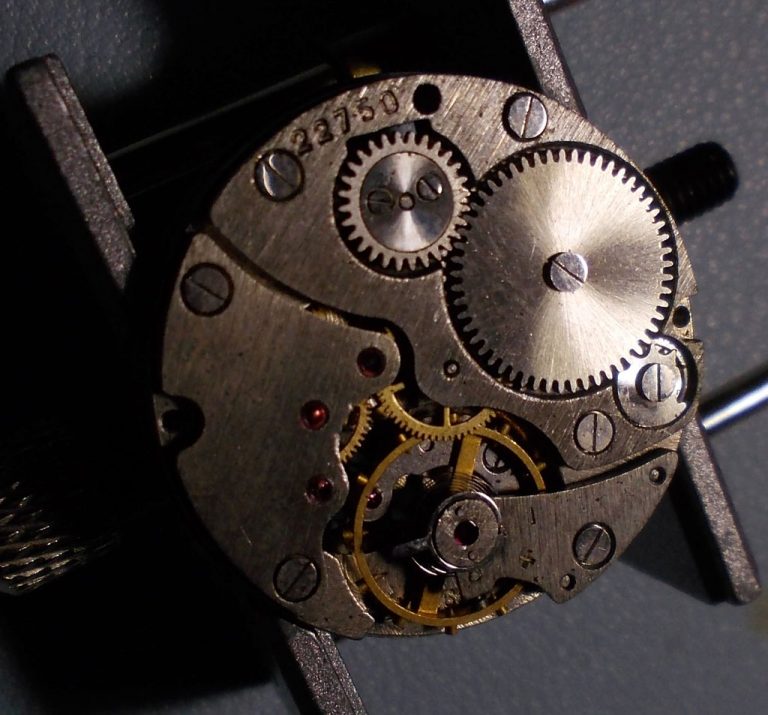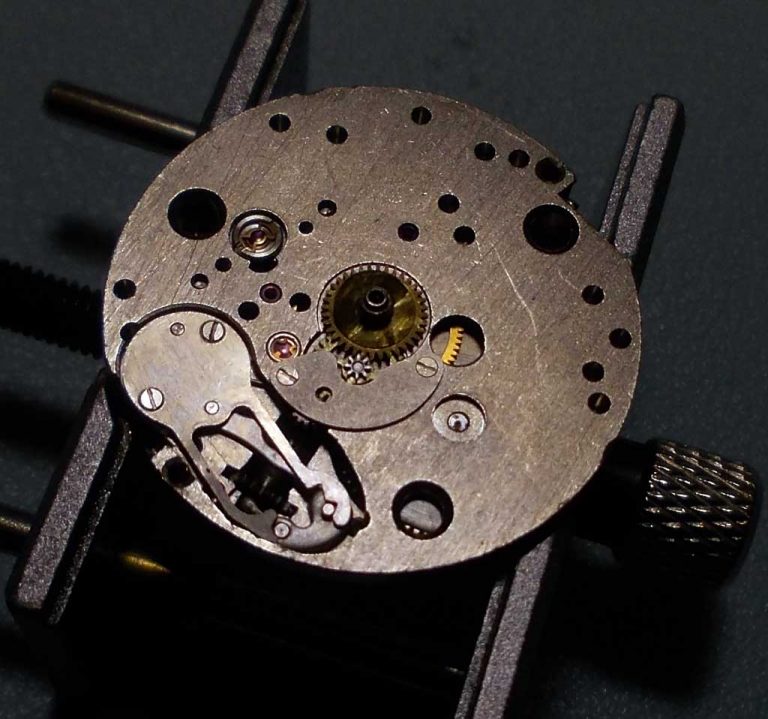For a change of pace, I fixed a French watch movement. So far I’ve done only some Soviet watches of the Big Three, and this was rather different in some ways.
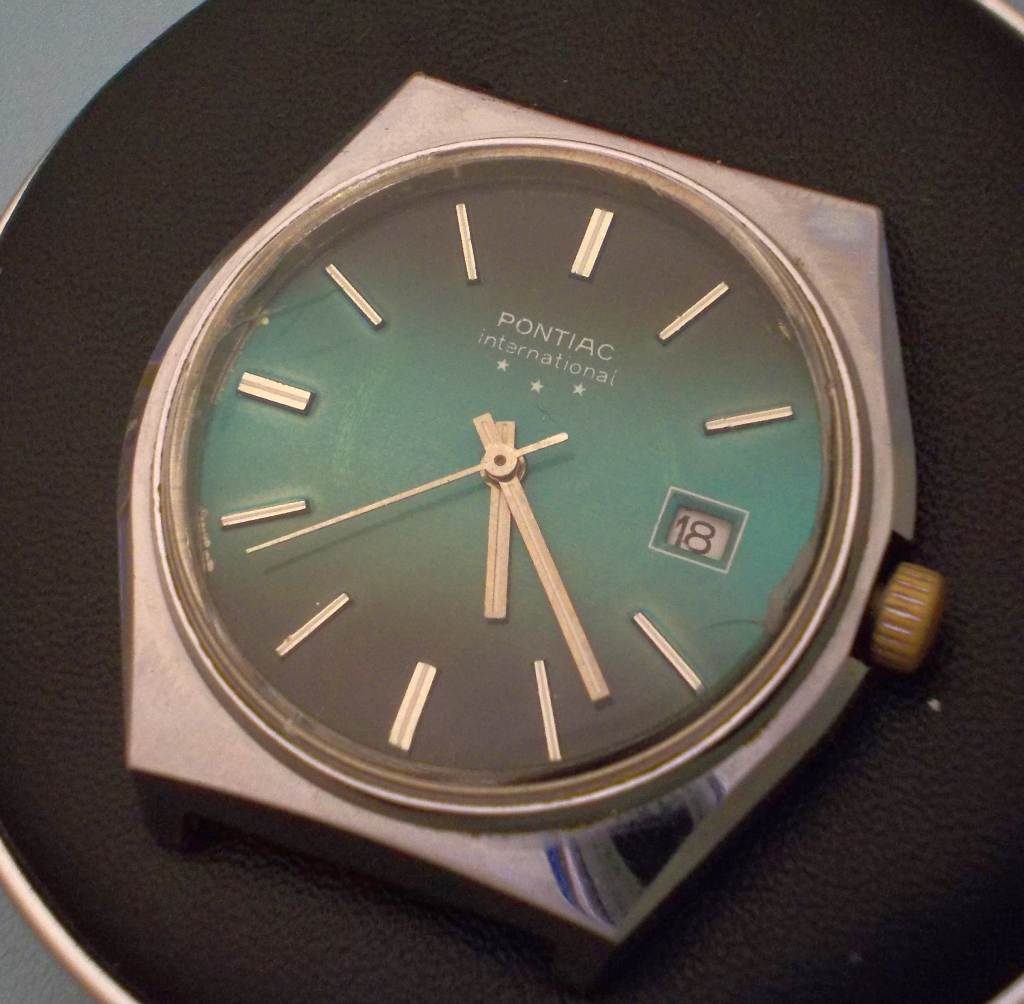
This watch was my father’s originally, I wore it in my early teens until the keyless works got busted in a bicycle accident and the watchmaker declared it unrepairable, after which it lay in a drawer for 35 years.
The crown on this watch stuck out a bit more than it should, making it more vulnerable to impacts I guess. I think this was the result of an earlier shoddy repair job by the same watchmaker… This is the winding setting:
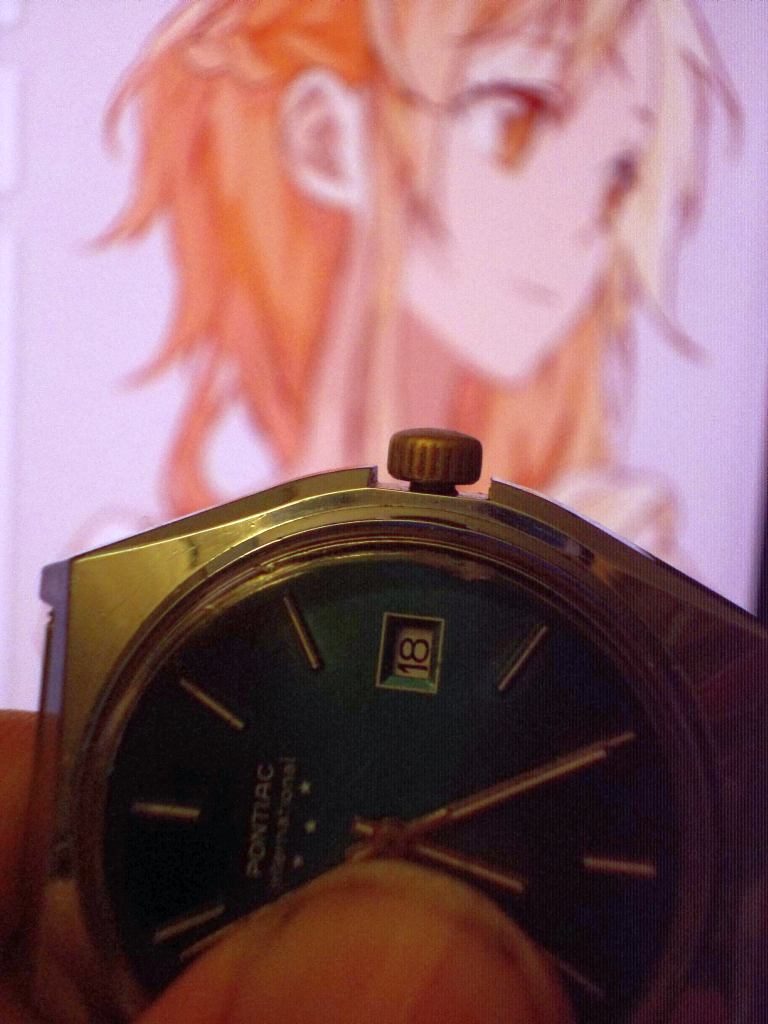
Ideally I should shorten the stem but it seems stuck on solid, and if I break the stem I’d also need to find a replacement crown. It’s probably epoxied on.
I took apart the movement, saw nothing wrong, reassembled it and took it apart again before I identified the issue: the stem hole in the base plate was deformed, so the stem would go in up to its square section and become blocked. Note the deformation where the stem was rammed in too deep:
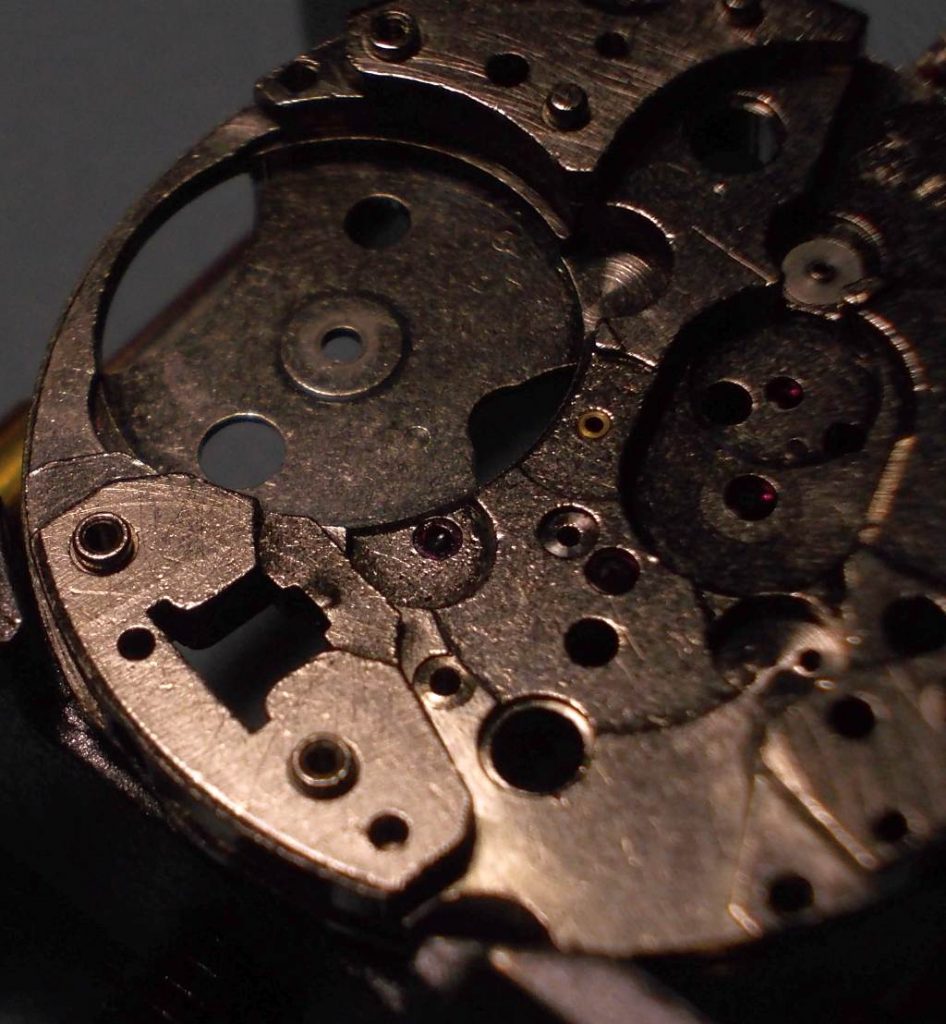
I fixed it with a couple of light taps. Turns out you actually CAN fix a watch by hitting it with a hammer 🙂
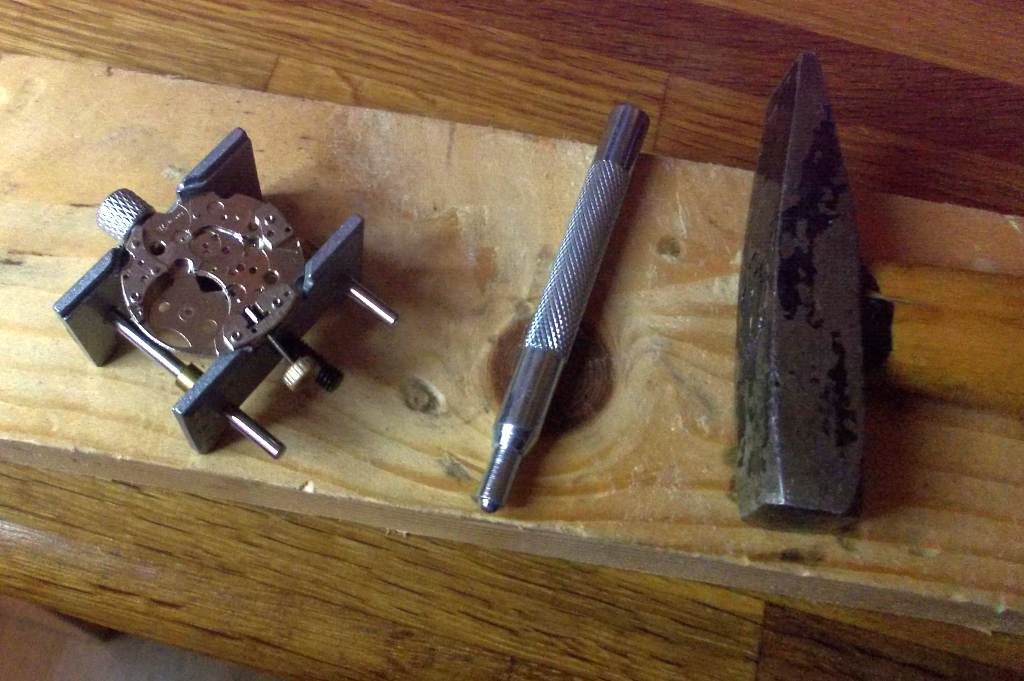
Here are the movement tear-down steps, for your edification and delight:
The spring for the date ring click can be removed through a nice hole (photos show all springs in their correct orientation):
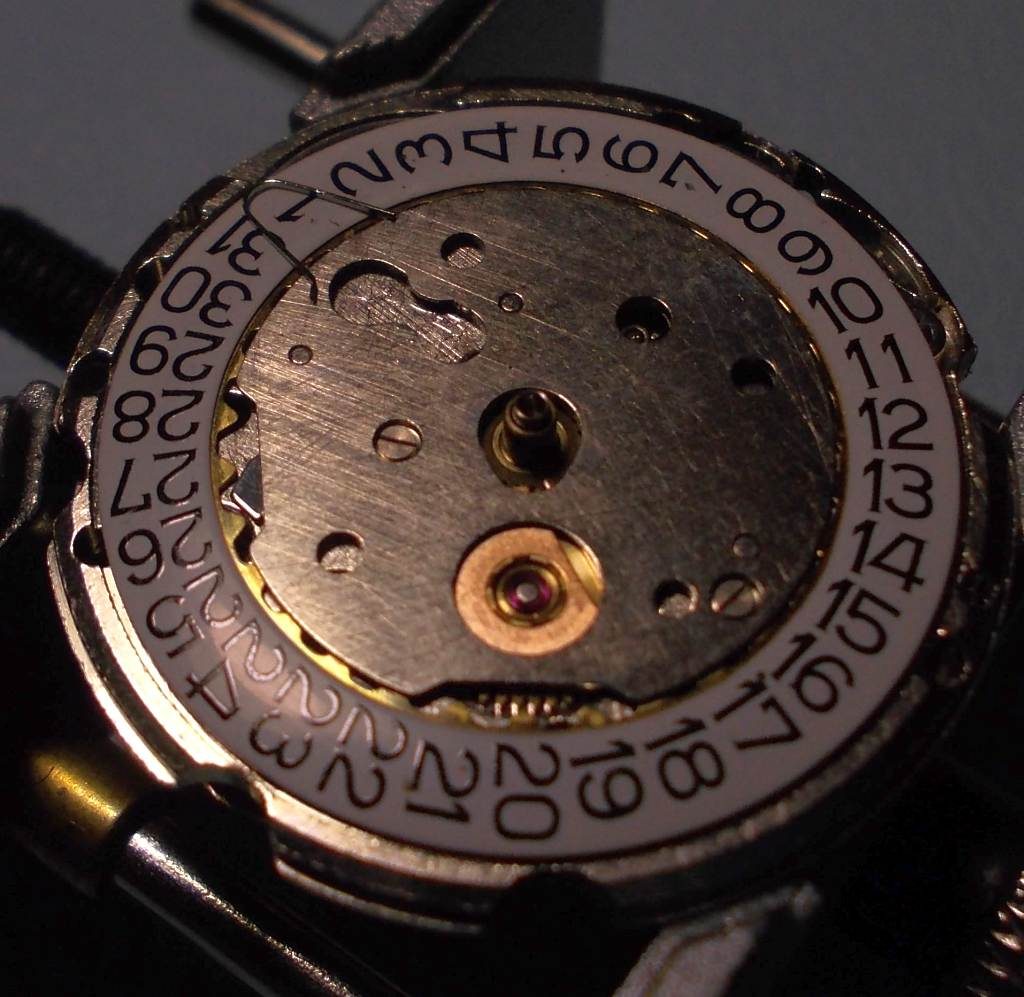
With the date ring plate removed:
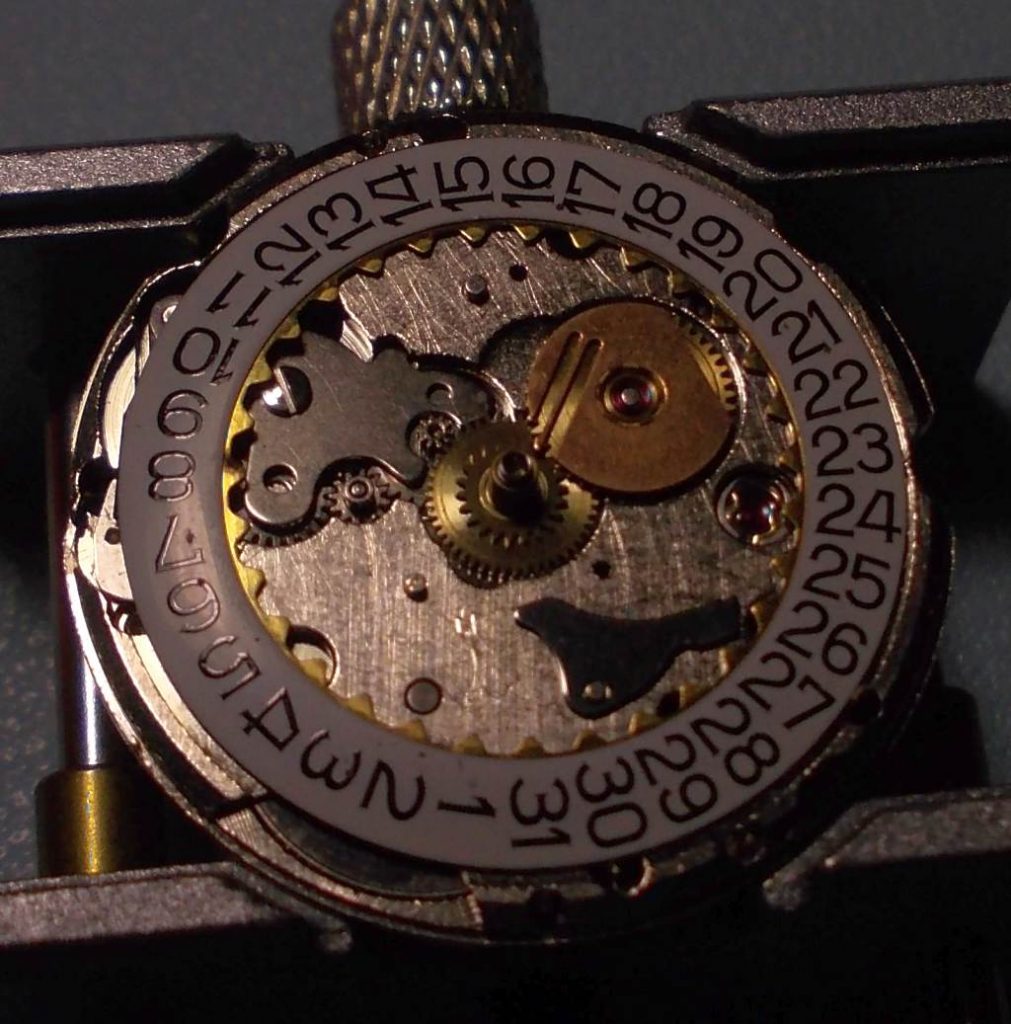
This movement has 17 jewels and some of them are in odd places, such as the date ring drive.
The keyless works look rather complicated for a watch without a quick date set feature, there are a lot of wheels…

One spring there, another one below the wheel with 4 holes:
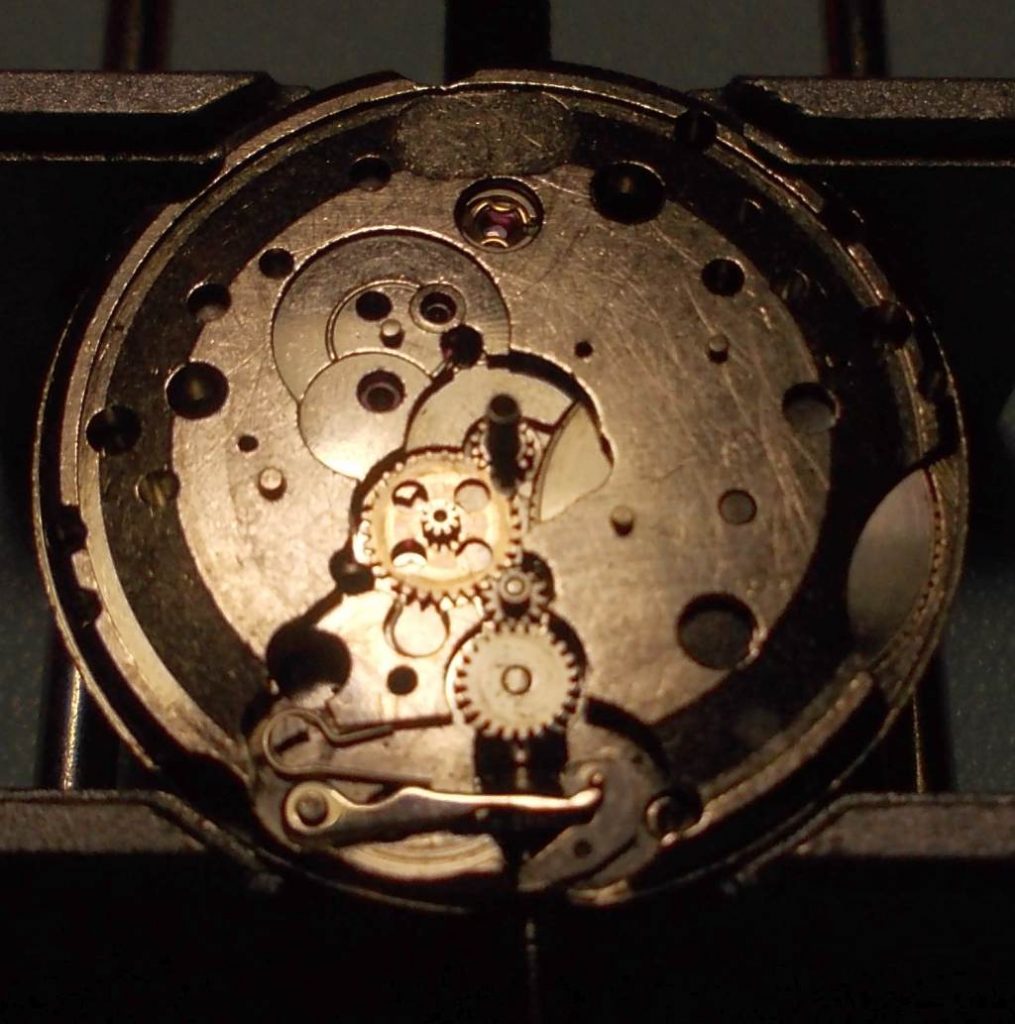
I’m not exactly sure why that spring is there… The most puzzling for me about this movement is that the cannon pinion is not in the center. That was new to me. The cannon pinion is that gear on the left of center.
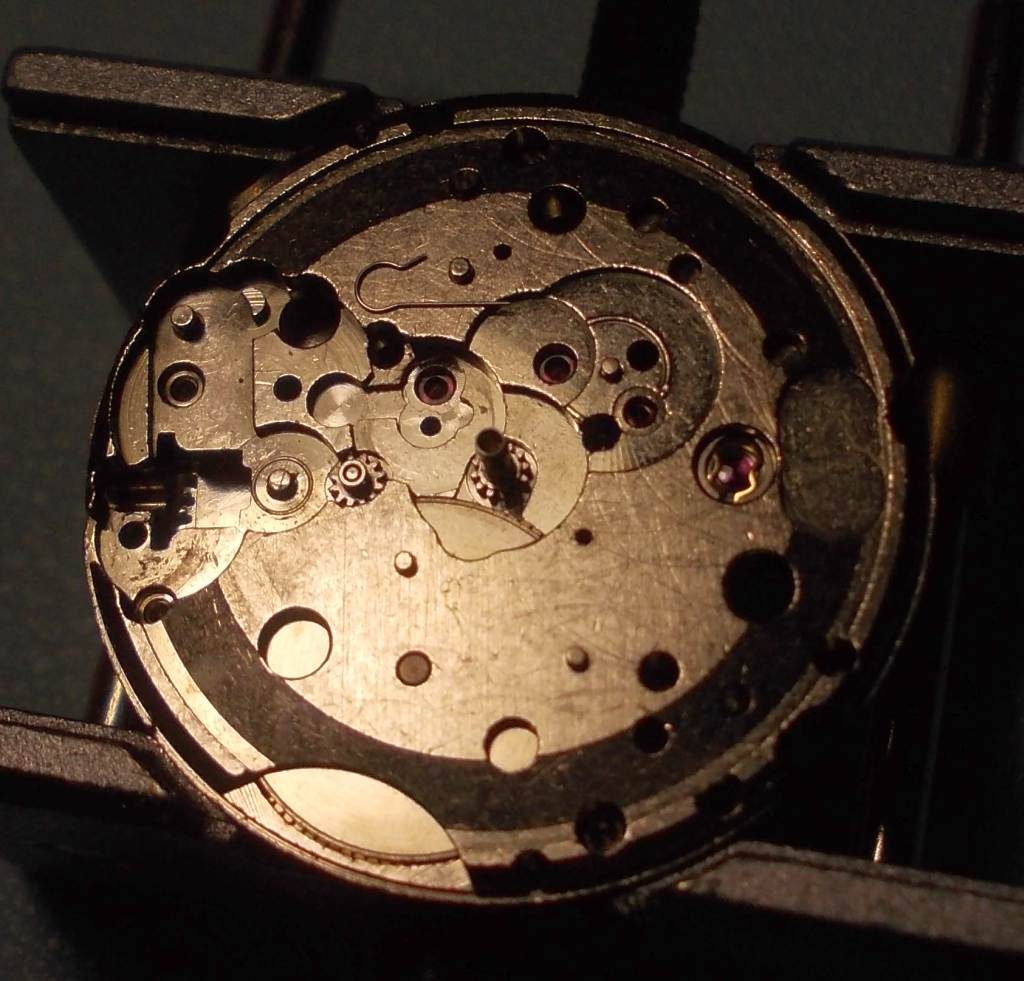
The other side:
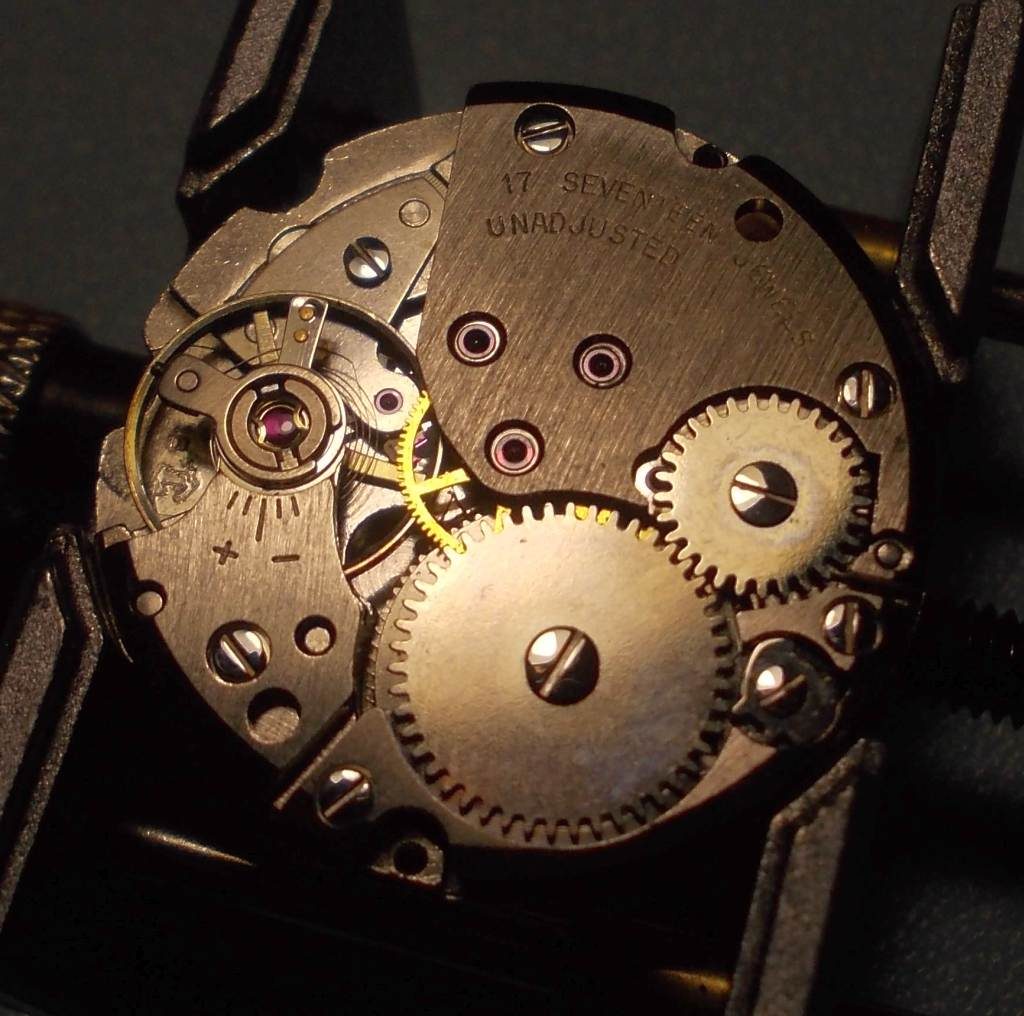
A nice thing is that the shock protection springs on the balance jewels lift like on a hinge and don’t fly off into the scenery.
The mainspring bridge and train bridge can be removed without taking off the click or the winding gear respectively. Two screws each.
This is the drive train.
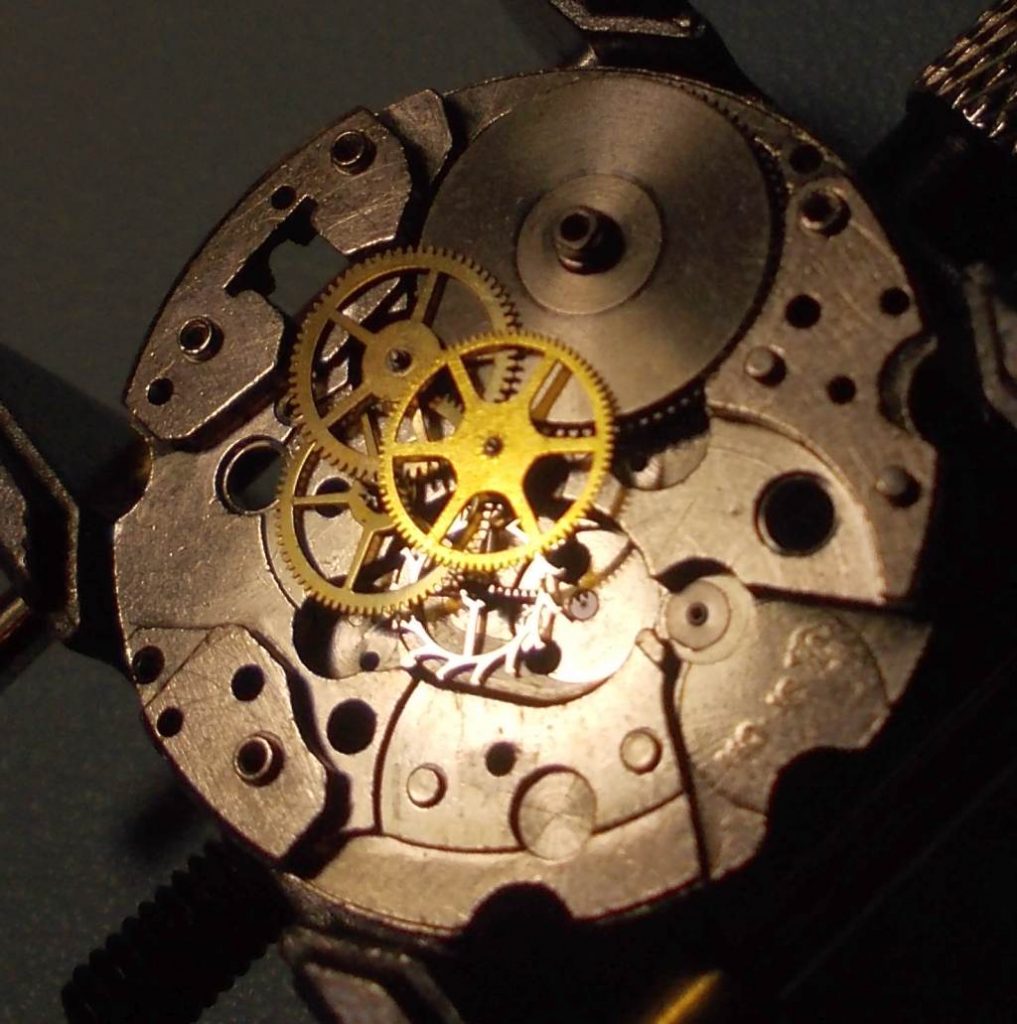
That one is the cannon wheel, you’ll reassemble that first:
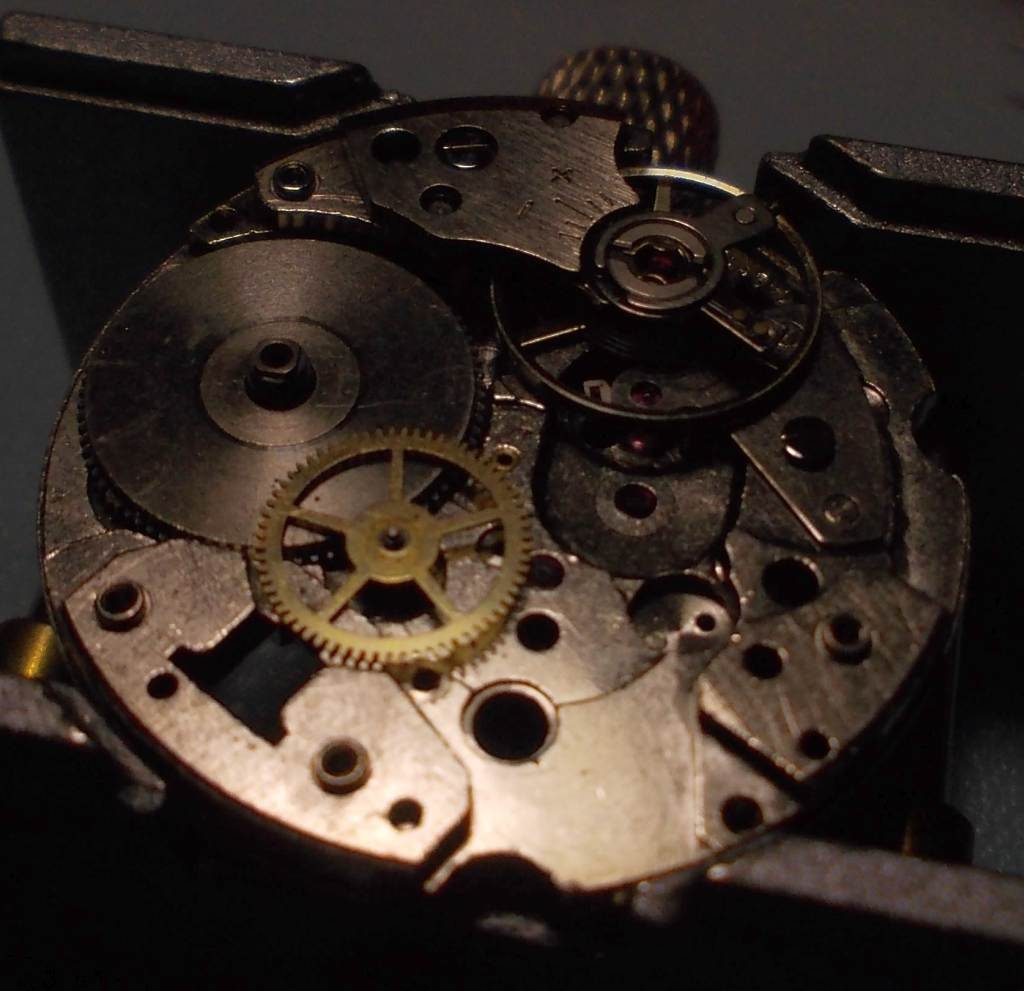
The pallet fork bridge has one big screw. Fiddly to get into position:
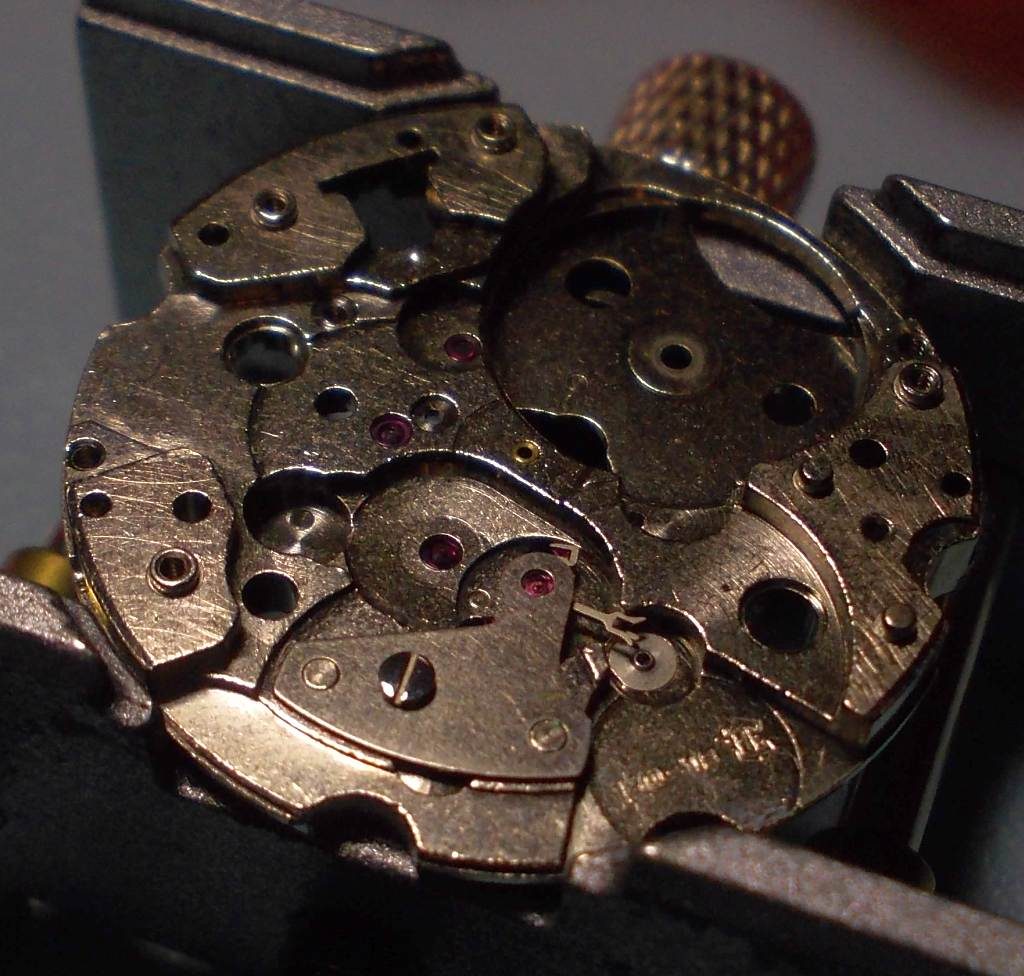
The plate is marked 140-1B and “FE” for France Ebauches:
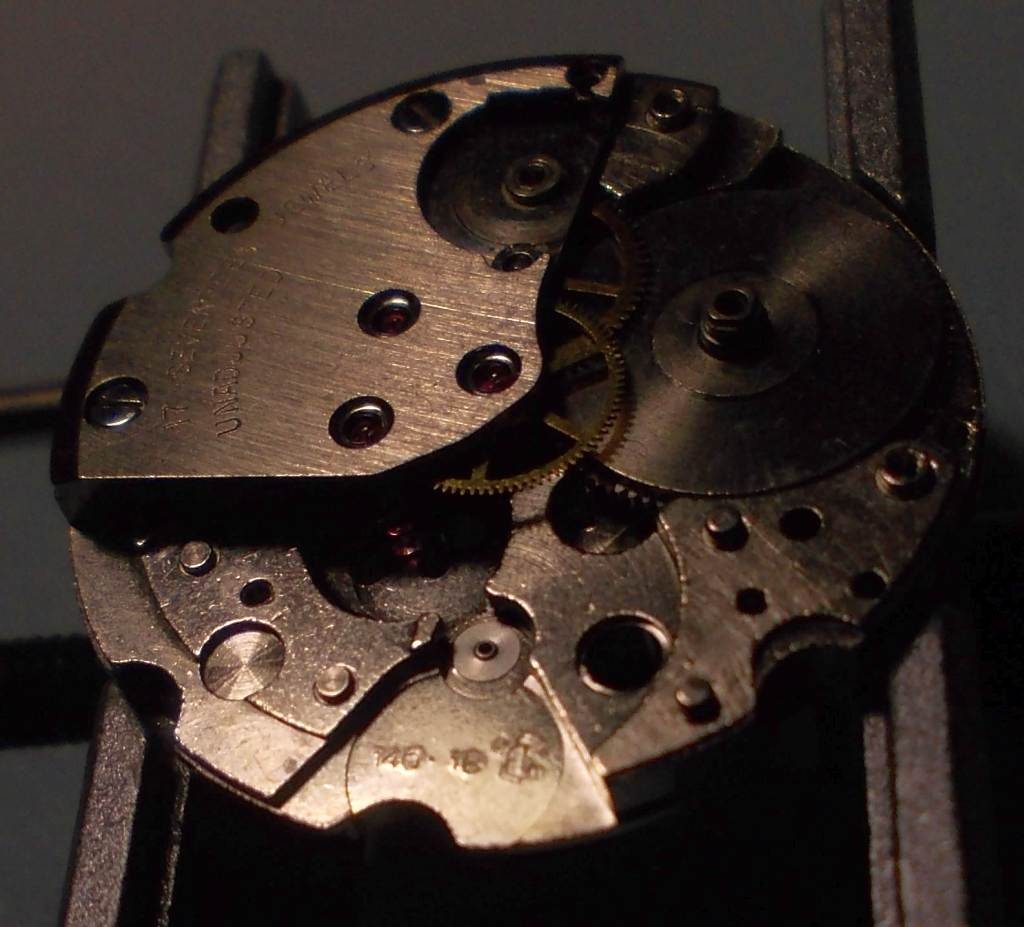
There’s not much info on these movements it seems.

